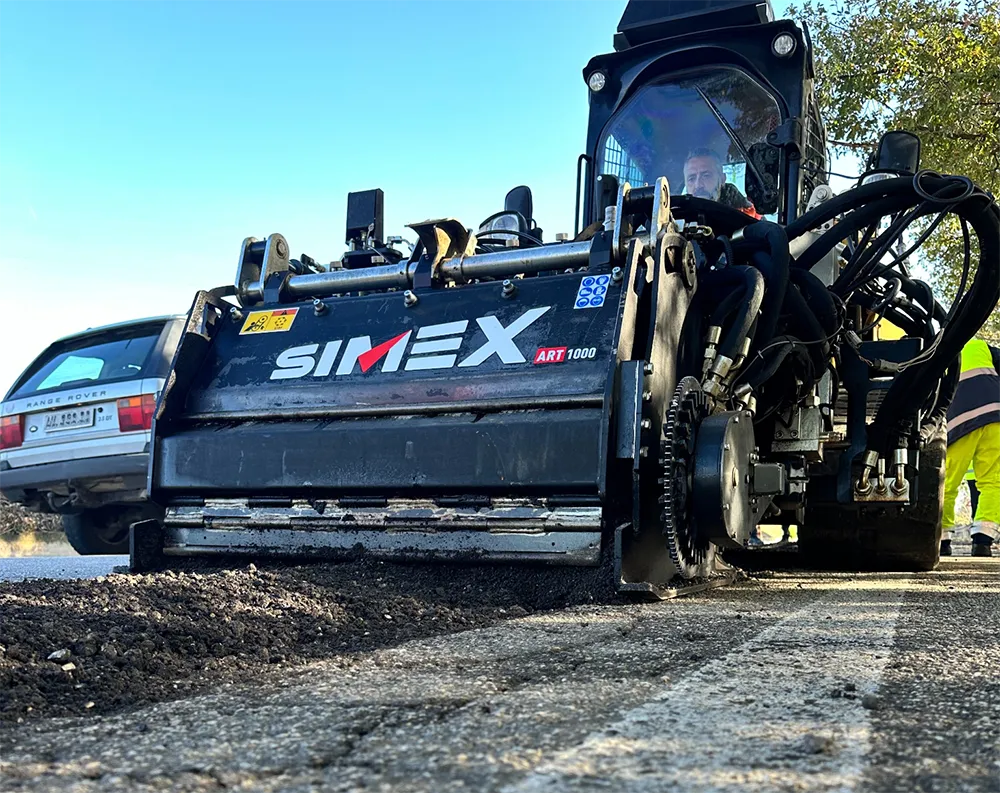In Italy an MP1000 cutting system from Simex has been used to help resurface the walls of a highway tunnel. The SS51 State Road crosses through the Dolomites in the north-eastern Alpine Region of Italy. The SS51 starts in San Vendemiano in the province of Treviso and ends in Dobbiaco in the province of Bolzano and is a key road because it connects Cadore and the main towns in the area of Cortina d'Ampezzo. This 134.4 km road has expansion work and upgrades to improve safety and boost capacity.
One the most important sections is the 1.34km Caralte tunnel near Pieve di Cadore, which has a road surface 7.2m wide and includes 1.3m wide pedestrian walkways. Along with the ponte Cadore, this single-tube tunnel is part of an important bypass that avoids motorists from having to pass through the town of Perarolo di Cadore and the section of road known as la Cavallera with its many hairpin turns. But, completed in 1985, the concrete lining of the tunnel had started to deteriorate.
The ANAS road infrastructure authority of the Venice district decided to restore the tunnel walls by means of waterproofing and ceiling reinforcement. The project consisted of injecting polyurethane resins to close the cracks and prevent water from reaching the lining, removing 30mm of the degraded layer by scarification and then applying a special fibre-reinforced grout. The tunnel ceiling was also fittted with four L-shaped elements at spaced intervals to prevent detachment of the concrete over time. The rehabilitation works of the Cadore Tunnel were assigned to a temporary consortium made up of Cadore Asfalti Srl of Perarolo di Cadore and Esposito Mario of Trento.
A critical aspect of the job came from the time restraints of closures for the restoration works. Even partial closure would lead to detours along the long and winding roads. High productivity as well as precise profiling were crucial and in all, the project required a total of 24,300m2 of scarified surface.
Contractor Grotti carried out the scarification using a GTF 200 RC and a special Simex MP 1000 planer. The GTF 200 RC is a machine constructed by Grotti based on a tracked excavator but with features such as a telescopic boom that can follow the profile of the tunnel from the ceiling along the side walls; a hydraulic circuit designed to power the Simex attachments; and a remote control allowing the operator to work at a distance. Grotti was subcontracted by Cadore Asfalti. The extension of the boom right up to the 6.6m high tunnel ceiling and the fact that the boom could be retracted to follow the profile along the side walls allowed the work to be carried out. The Simex MP 1000 planer featured a drum equipped with 134 teeth, providing a surface ready for the application of the fibre-reinforced grout.
Injected resins were used to close the cracks and seal the joints. This entailed the use of single-component hydroreactive and expanding polyurethane resin from the MasterBuilder line produced by BASF. The MasterRoc MP 355 1K DW material is free of solvents and can react with water by forming a porous foam with expansion capacity 20-25 times its own volume.
This was injected in proximity to the cracks by boring 10-15mm diameter holes. Injection was carried out using polyamide truncated cone-shaped packers, and in some more critical areas, in steel as well. Both models were certified to withstand an injection pressure of 250bar and to ensure a seal. In some areas the procedure involved filling actual cavities formed behind the lining. In total, over 30,000 boreholes and injections were carried out, sealing the tunnel effectively.
Simex machine helps deliver new tunnel lining
In Italy an MP1000 cutting system from Simex has been used to help resurface the walls of a highway tunnel. The SS51 State Road crosses through the Dolomites in the north-eastern Alpine Region of Italy. The SS51 starts in San Vendemiano in the province of Treviso and ends in Dobbiaco in the province of Bolzano and is a key road because it connects Cadore and the main towns in the area of Cortina d'Ampezzo. This 134.4 km road has expansion work and upgrades to improve safety and boost capacity.
December 3, 2014
Read time: 4 mins








